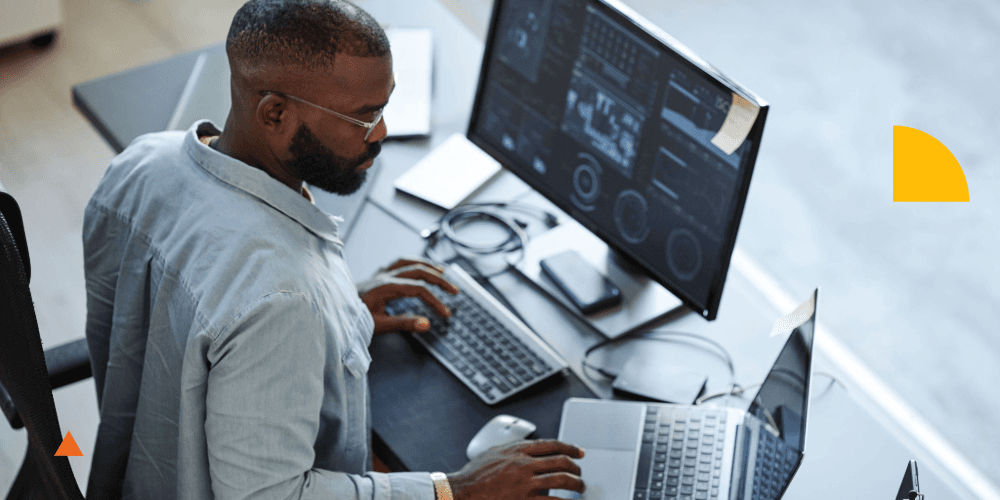We've said it before and'll say it again: IT modernization is no longer a luxury but a necessity. Updating outdated legacy systems is the cornerstone of remaining competitive, efficient, and secure.
Businesses must embrace IT modernization to enhance agility, reduce costs, improve user experiences, and more. Modernizing your IT org involves updating and upgrading your organization's technology infrastructure, systems, and applications. And, with the right roadmap, the IT modernization process can help to tackle current problems and set the stage for future growth and success.
That's not to say the journey to modernized IT isn't without its challenges. In this blog, we'll explore common challenges to IT modernization, how to overcome them, and enjoy a frictionless IT experience.
Top challenges to IT modernization
Legacy systems and tech debt
Legacy systems, built on outdated technologies, can drag down modernization efforts. Forrester indicates that only around half of organizations can effectively scale operations as needed (55%), quickly respond to disruptions (52%), and easily adapt to unforeseen events (48%).
Technical debt refers to the amount of outdated code or unsupported platforms in a particular organization. Accumulated technical debt due to delayed upgrades and patches further complicates matters, leaving organizations with obsolete and vulnerable infrastructure. A key component of digital modernization is application modernization, which helps reduce and eliminate technical debt.
Data security concerns
With modernized IT infrastructure comes the risk of potential data breaches and privacy issues. Implementing robust data security measures is crucial for protecting sensitive information.
Start with comprehensive risk assessments to identify vulnerabilities, then employ a secure architecture, and encrypt data to shield it from unauthorized access. Train employees in best practices, keep software updated, and enforce strict access controls to minimize risks. Develop an incident response plan, meticulously vet third-party partners, and implement real-time monitoring to detect threats early. With proactive steps, you can protect against security breaches.
Integration issues
Integrating new technologies with legacy systems is often challenging and time-consuming—not to mention it can contribute toward friction in the digital employee experience (DEX). Issues regarding compatibility, data formatting discrepancies, and complex dependencies can slow modernization progress. Developing strategies with compatibility considerations is essential. Consider using adapters, APIs, or middleware solutions to help facilitate seamless integration.
Budget limitations
Organizations everywhere are feeling the squeeze of ongoing economic pressure, and, as a result, budgets are tightening. This is undeniably challenging, as IT modernization requires significant financial investment, and limited budgets may slow progress.
Smart resource allocation and obtaining buy-in from key stakeholders are essential to navigating this challenge. Begin by prioritizing projects that deliver the highest ROI. For example, instead of a complete system overhaul, focus on upgrading critical components that enhance performance and security. To gain buy-in from stakeholders, communicate the long-term benefits and cost savings associated with IT modernization. Develop a detailed business case highlighting how modernization will improve efficiency, enhance user experience, and provide a competitive edge.
Change resistance
IT modernization requires changes in workflows and an inevitable cultural shift. If employees are resistant to change or unwilling to embrace new tools, this can significantly impact the success of your IT modernization plans.
Effective change management strategies are critical to the smooth adoption of new tech. Address employee resistance through clear communication, comprehensive training programs, and stakeholder involvement. Preparing employees for new systems and processes will help them feel more enthusiastic and ready to embrace new approaches.
Skills gap
Amid the high tides of technological innovation, organizations often find it challenging to find skilled professionals capable of handling modern technologies. This disconnect can lead to delays in implementation and maintenance. According to Forrester insights, 42% of IT decision-makers say their organization doesn't have the right skill set to manage the current operating model.
Organizations must invest in training and upskilling employees if they want to move away from legacy systems toward a modern IT org. A recent Salesforce survey found that many believe prioritizing employees' digital skills development will boost productivity (47%), better team performance (43%), and improve problem-solving capabilities (40%).
IT modernization is a journey. And like most journeys, challenges and opportunities can be expected along the way. Understanding critical objectives, leveraging modern IT management tools, and implementing strategic plans, can help businesses overcome challenges.
Embrace the path to IT modernization to secure a competitive edge in today's fast-paced digital landscape and benefit from enhanced agility, efficiency, and user experience.







